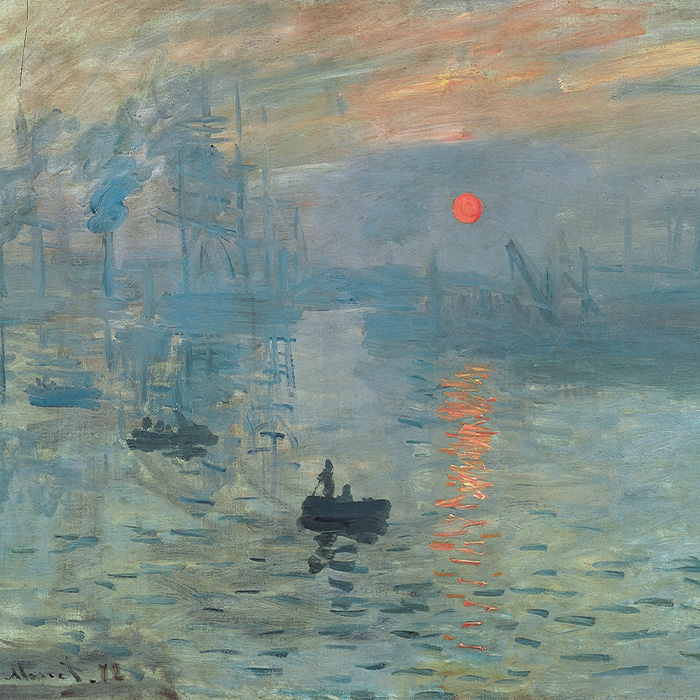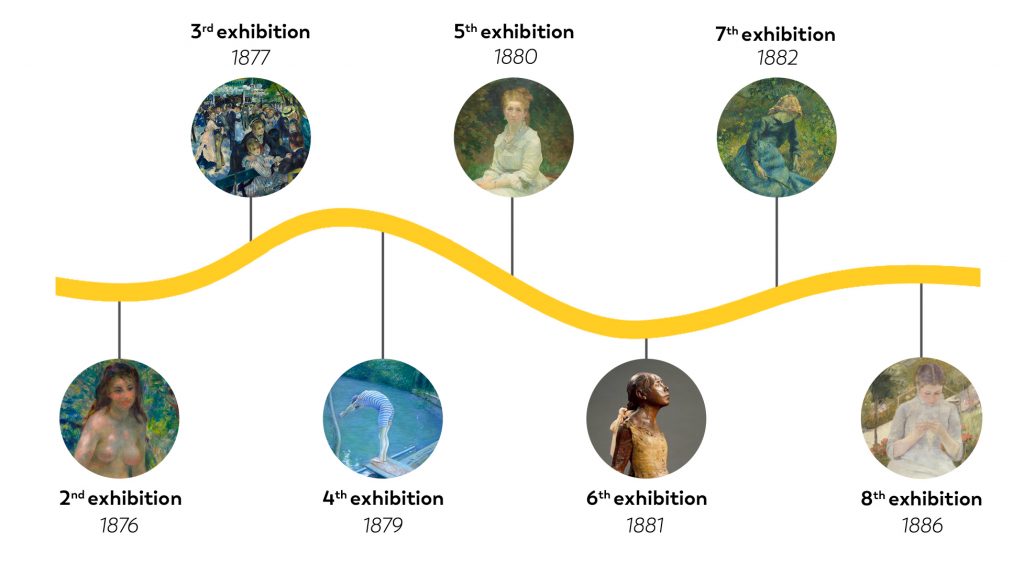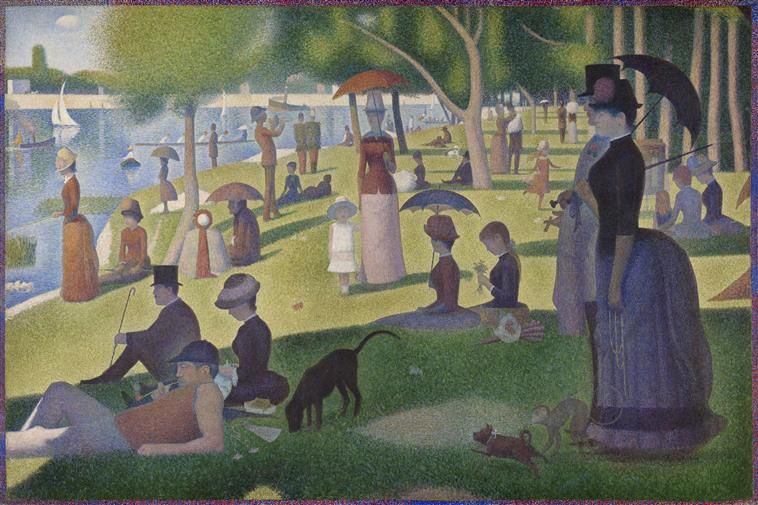


In the 1860s, an informal artist collective, including Monet and Renoir, congregates in Paris around shared ideas. Their goal? To provide an alternative to official, “academic” art, which is subject to specific, unchanging rules.
The style of art taught in Schools of Fine Art is based on rigid principles and well established themes: historical, mythological and religious subjects for the most part.
In contrast, this group of artists, who aren’t yet known as “impressionists”, consider that painting should be a means of capturing the moment, whether it’s a changing sky or rapidly changing world around them. To this end, they develop a completely different method and a new approach:
They paint “sur le motif”, i.e. outdoors in the open air, in order to study the effects of light;
Unfortunately their works are often refused by the jury of the Salon, France’s main official art exhibition held by the Academy of Fine Arts. So they come up with the idea of organising their own exhibitions to show their works and find buyers without having to depend on the Salon.
In 1874, it’s a done deal: the year sees the first of a series of exhibitions that would eventually be described as impressionist.

In the 1860s, painters opposed to academic art begin to think about organising their own exhibitions.
1874 sees a grand première: tired of the Salon’s repeated refusals, these artists mount their own independent exhibition. It’s up to them to decide which works to present and how to present them! What counts most is solidarity: commissions are charged on sales of paintings and they have to be shared fairly among the participants.
On 15 April, the exhibition opens its doors at 35 Boulevard des Capucines in Paris, in the former studios of photographer Félix Nadar. Curious to know what there is on show there? Then off we go for a private visit!
There’s our little group of “independent” artists. And a good many critics muttering in front of these “daubers” who are exhibiting paintings of “impressions” that the public deem slapdash, unfinished.
And they aren’t the only ones to try their luck!
A number of academic artists, no strangers to the Salon, also take part, tempted by the idea of an independent exhibition. Such is the case, for example, with Auguste Ottin and Alfred Meyer.
Assessment? Although it’s a financial disaster, as only four paintings are sold, the exhibition is seen by a good many art lovers and critics and has caught people’s attention. It’s a glorious feat!
Later, it will be seen as marking the “official” beginning of impressionism.

The 1874 exhibition brings together artists from a variety of backgrounds but connected by a common desire: to exhibit together, independently of the Salon. It’s one of impressionism’s founding events.
Despite the first exhibition’s financial failure, the impressionist painters don’t give up! Between 1874 and 1886, they hold eight exhibitions that include a total of 58 different artists.
So the group of exhibitors continues to evolve, with dropouts and new recruits along the way. Although profiles remain varied, certain artists emerge as key figures in the movement:
Paul Cézanne (1839 – 1906) was amongst the artists whose submissions were refused by the Salon and exhibited three works in the first impressionist exhibition in 1874. However, he leaves the group in 1877 and sets off on his own artistic journey. Conversely, other artists join the ongoing adventure, including Gustave Caillebotte and the American painter Mary Cassatt.

Over the course of the eight impressionist exhibitions, the group of artists who participate in them continues to evolve.


Eight impressionist exhibitions, of various sizes, are held between 1874 and 1886.
Among the eight exhibitions, the third edition, held in 1877, stands out for its remarkable unity.
The works in the exhibition, this time in a rented apartment in Rue Le Peletier, are remarkably homogeneous.They assert the principles of the “new painting” loud and clear! It’s also on this occasion that the group’s artists use the term “impressionists” for the first time, in their exhibition banner and as the title of their newly founded art magazine.
Another grand première: the exhibition is well received and makes a profit. Buyers include the painter Caillebotte in person. He uses his fortune to support his friends!

The third exhibition in 1877 really puts impressionism on the map as a new, coherent and unified form of painting drawing its subjects from nature, the open air and the modern world.
But tensions are already appearing among the exhibitors. Two questions divide the group:
In 1882, given the climate of disagreement, a number of critics wonder if it’s already the end of impressionism.

Disagreements on the thorny subjects of participation in the Salon and the profile of new exhibitors create tensions.
The 1886 exhibition stands out for the variety of artists and styles it includes. The participation of Georges Seurat and Paul Signac, new recruits, isn’t universally supported as their painting heralds new directions. The two young recruits, who were brought in by Pissarro, prefer to use touches of pure colour, basing their practice on scientific principles – in contrast to the freer, more spontaneous approach taken by their predecessors, the impressionists: they’re practitioners of divisionism.
Six years have passed since the previous edition in 1882 and the art world is evolving rapidly. A clientele is developing for impressionist painting, and new ways of exhibiting, often solo shows, are enjoying growing success. Our protagonists are disbanding, with many of them settling a long way from Paris… The 1886 exhibition will be the last.
The rich and eventful history of impressionist exhibitions shows us that the one and same ideal brought these very different artists together for a while: a great burst of independence and freedom!


The last of those eight collective events, the 1886 impressionist exhibition marks the end of an era during which these artists shared a common ideal of artistic independence and freedom.
An episode produced under the academic supervision of Anne Robbins and adapted from her lecture “The Impressionist Adventure · The Exhibitions”.

"*" indicates required fields